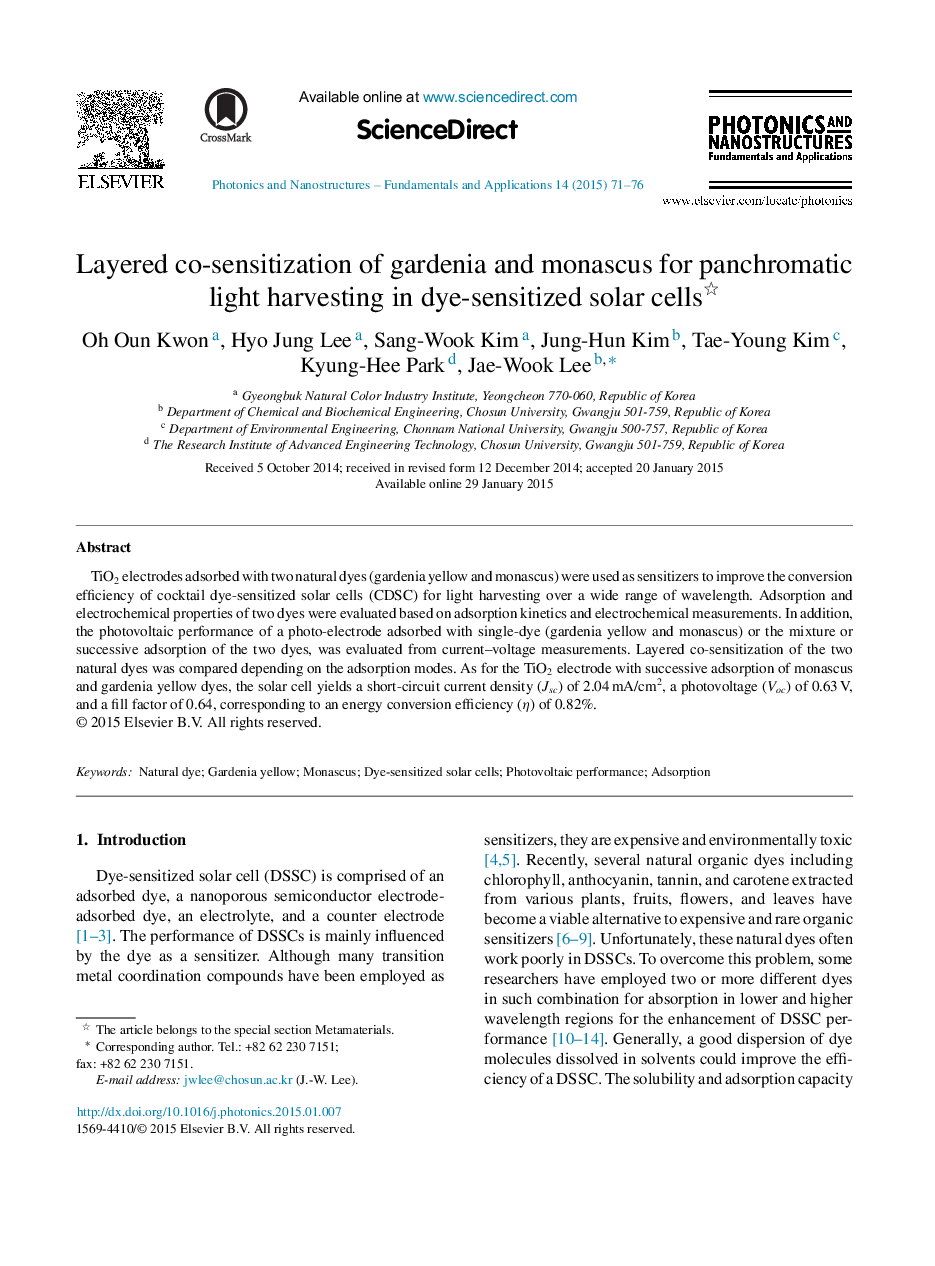| Article ID | Journal | Published Year | Pages | File Type |
|---|---|---|---|---|
| 1542981 | Photonics and Nanostructures - Fundamentals and Applications | 2015 | 6 Pages |
•Gardenia yellow and monascus were employed as sensitizers in DSSCs.•Adsorption and electrochemical properties of two dyes were evaluated.•The photovoltaic conversion efficiency was highly dependent on how to formulate the layered co-sensitization.
TiO2 electrodes adsorbed with two natural dyes (gardenia yellow and monascus) were used as sensitizers to improve the conversion efficiency of cocktail dye-sensitized solar cells (CDSC) for light harvesting over a wide range of wavelength. Adsorption and electrochemical properties of two dyes were evaluated based on adsorption kinetics and electrochemical measurements. In addition, the photovoltaic performance of a photo-electrode adsorbed with single-dye (gardenia yellow and monascus) or the mixture or successive adsorption of the two dyes, was evaluated from current–voltage measurements. Layered co-sensitization of the two natural dyes was compared depending on the adsorption modes. As for the TiO2 electrode with successive adsorption of monascus and gardenia yellow dyes, the solar cell yields a short-circuit current density (Jsc) of 2.04 mA/cm2, a photovoltage (Voc) of 0.63 V, and a fill factor of 0.64, corresponding to an energy conversion efficiency (η) of 0.82%.
Graphical abstractFigure optionsDownload full-size imageDownload high-quality image (90 K)Download as PowerPoint slide
